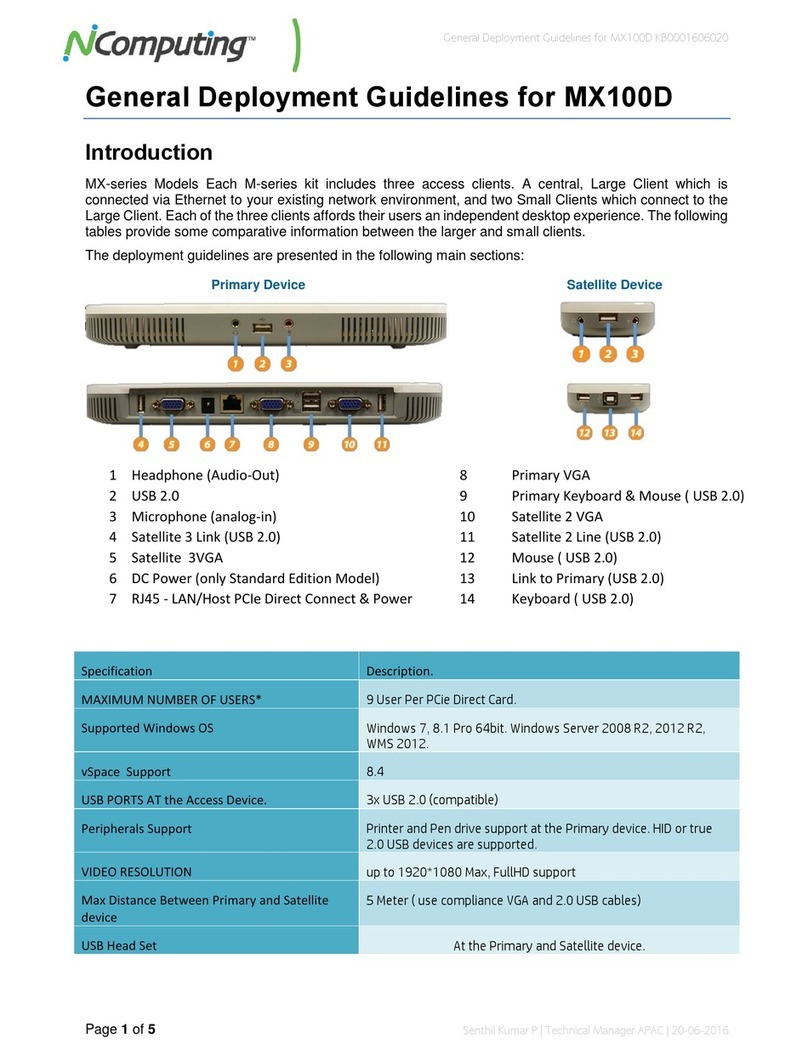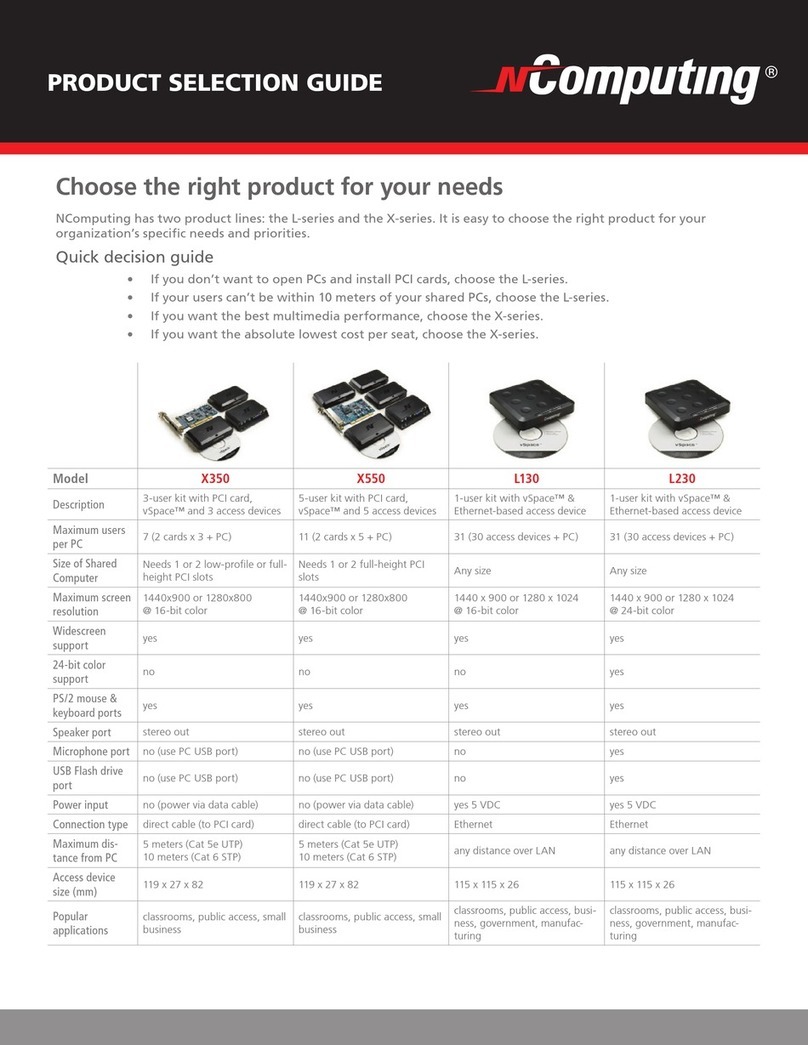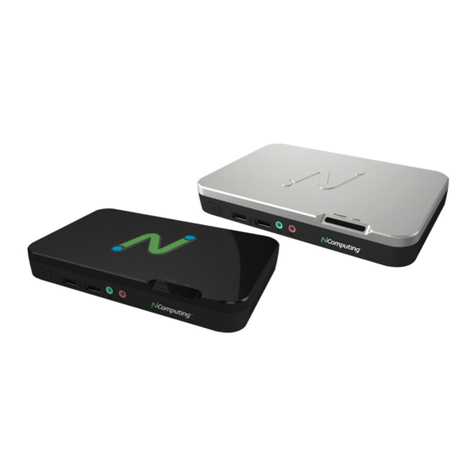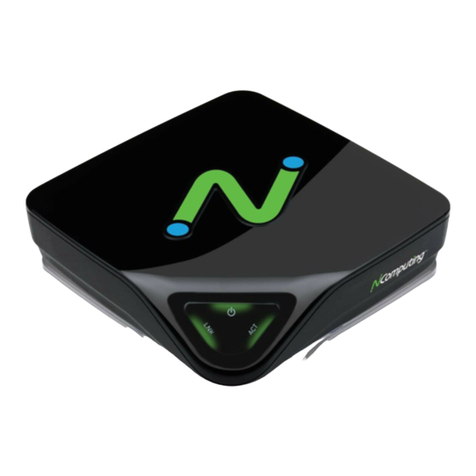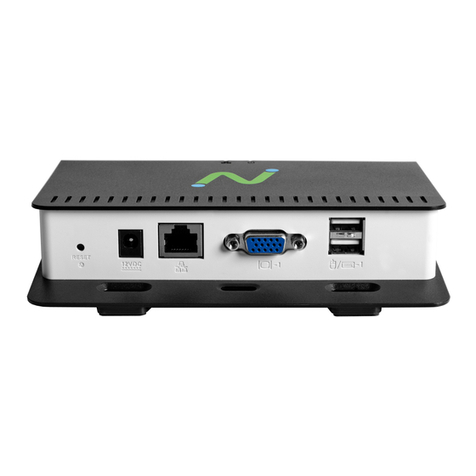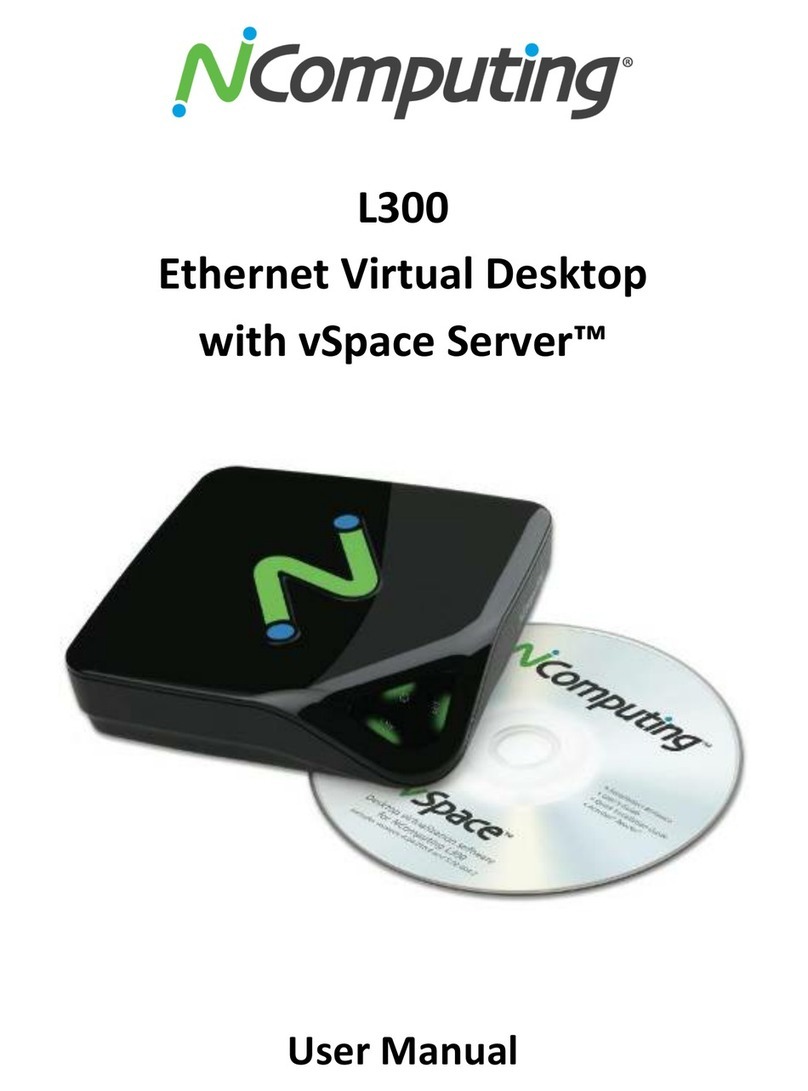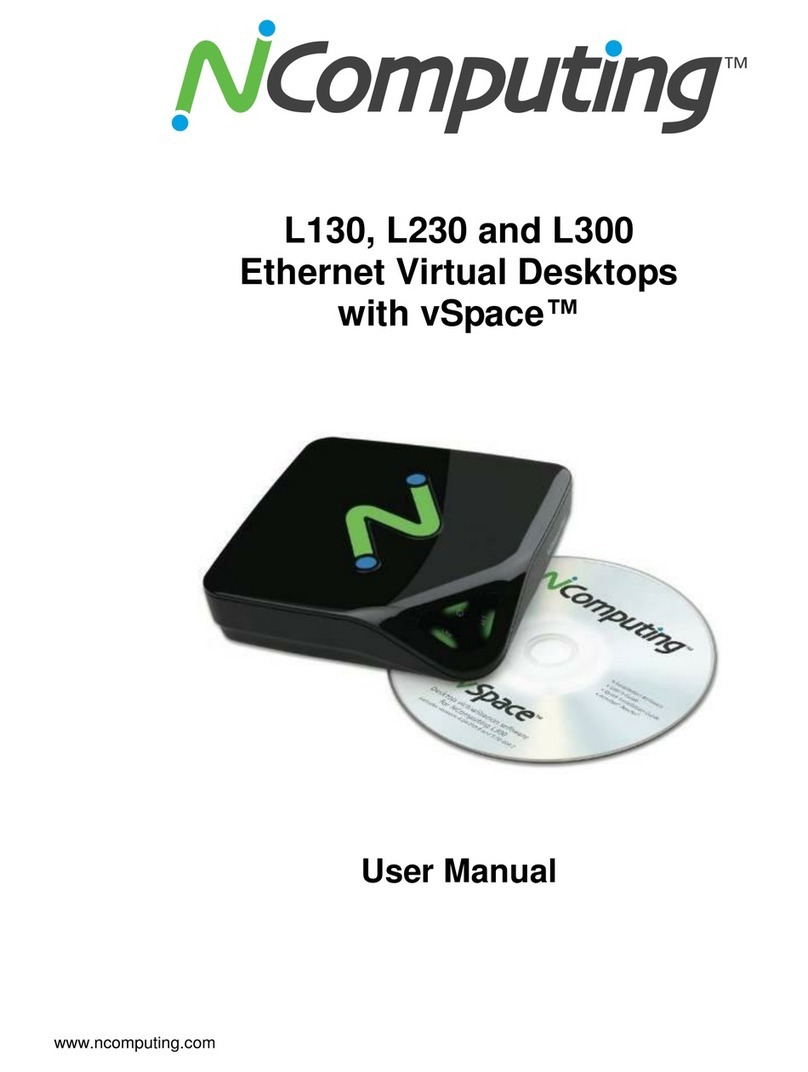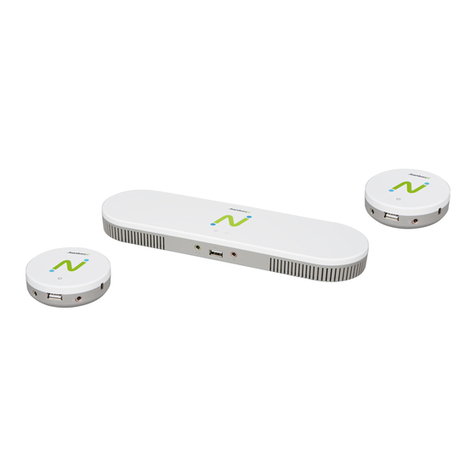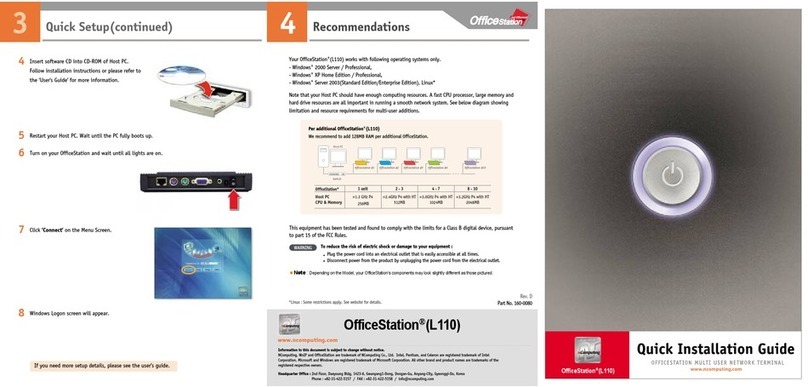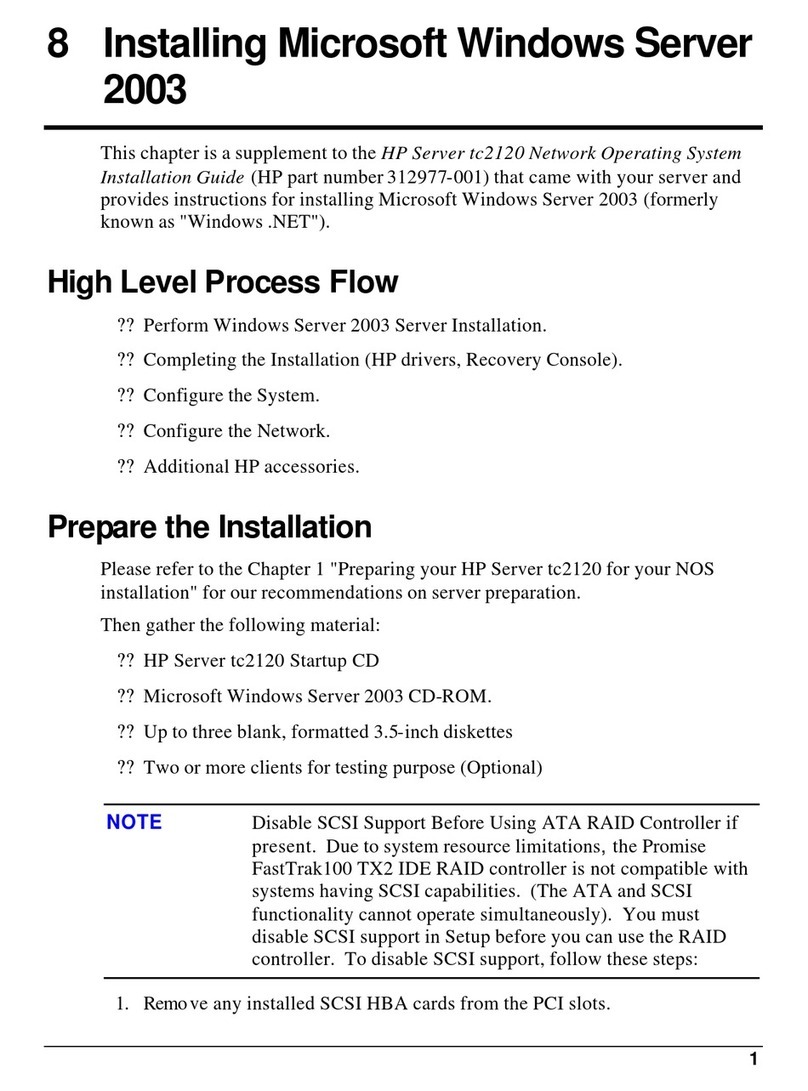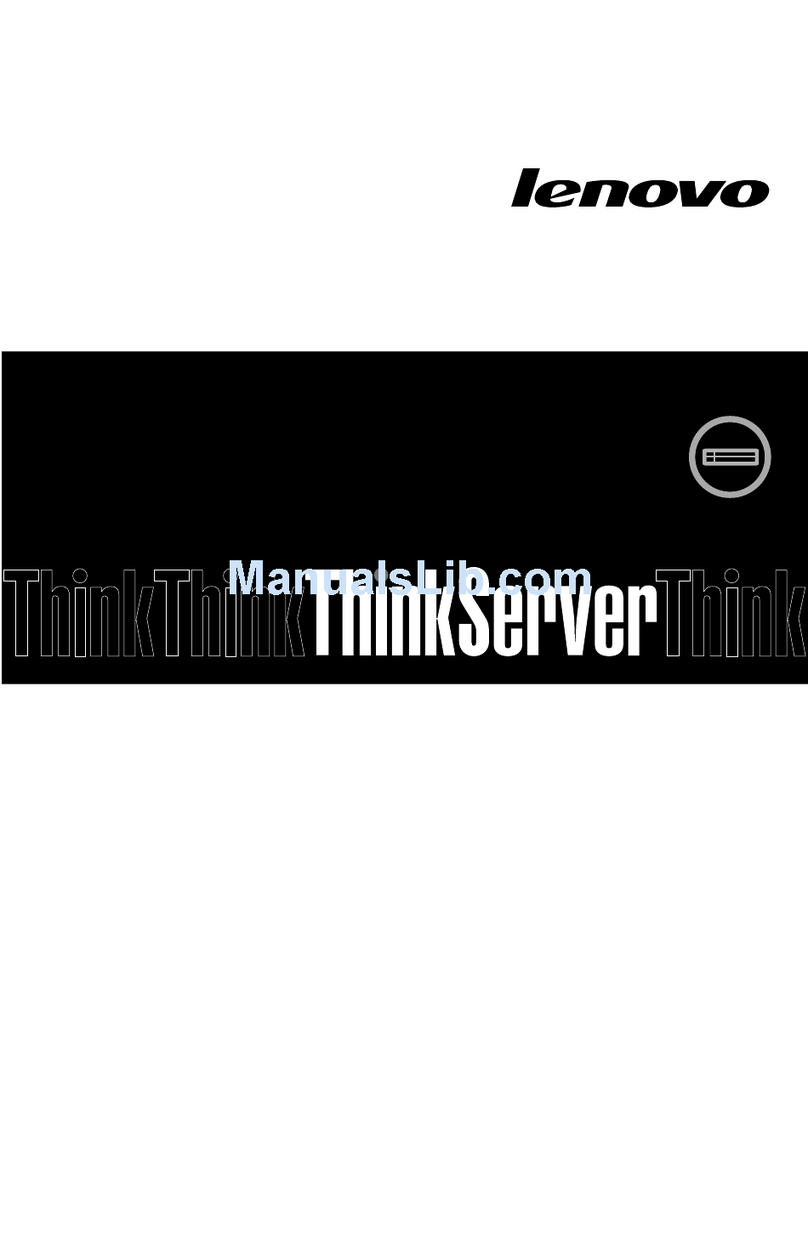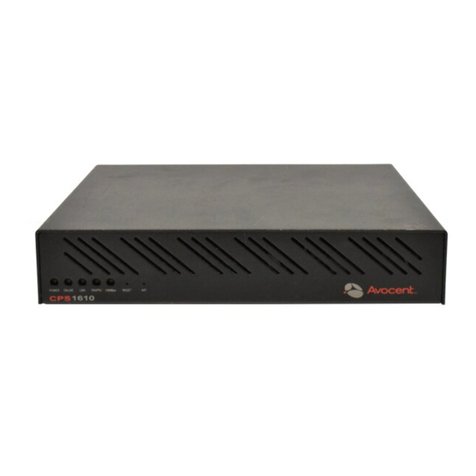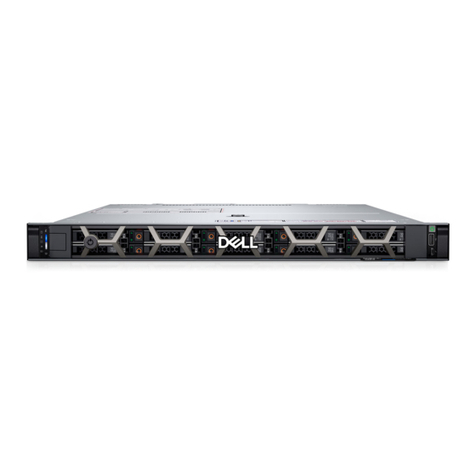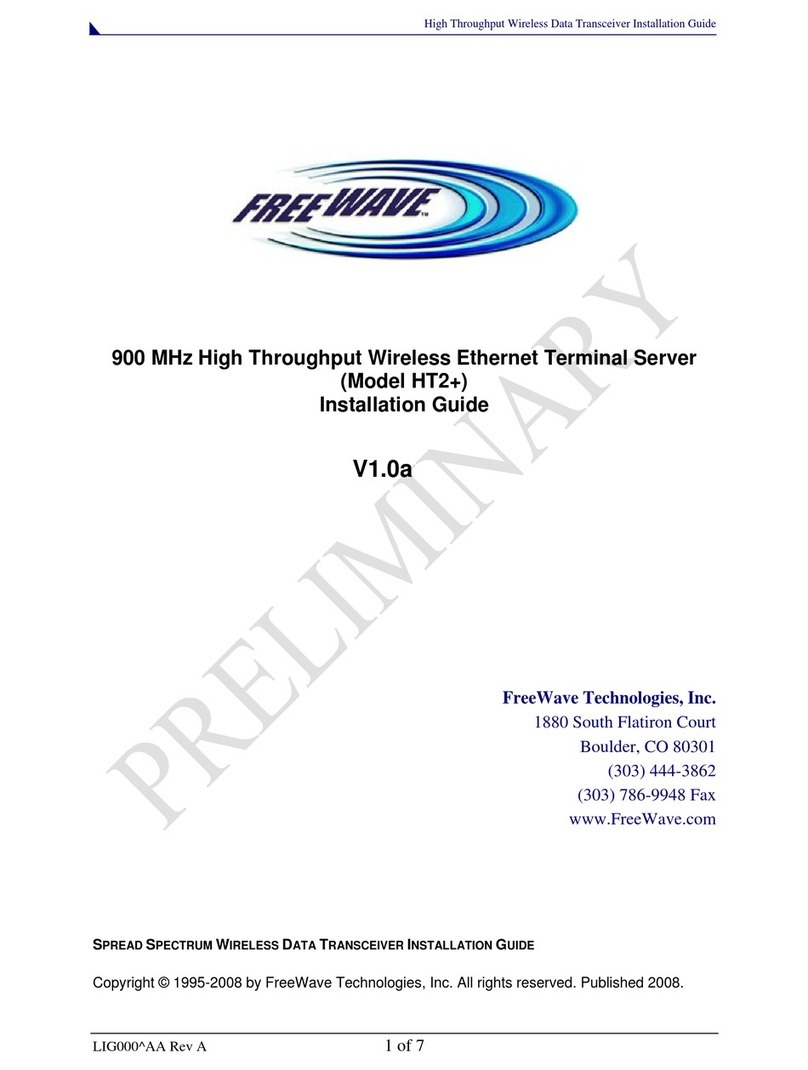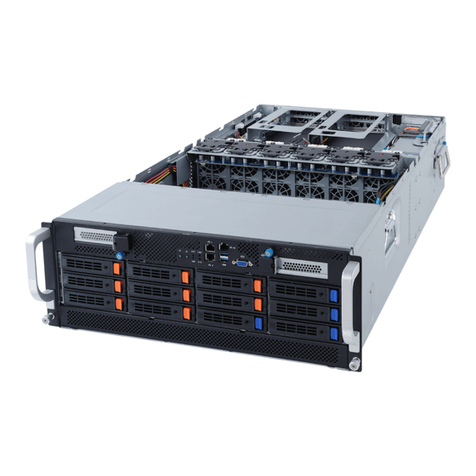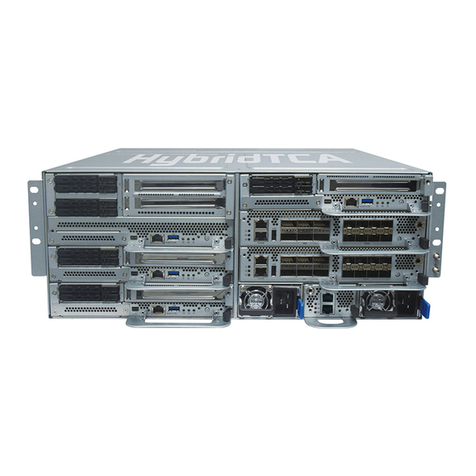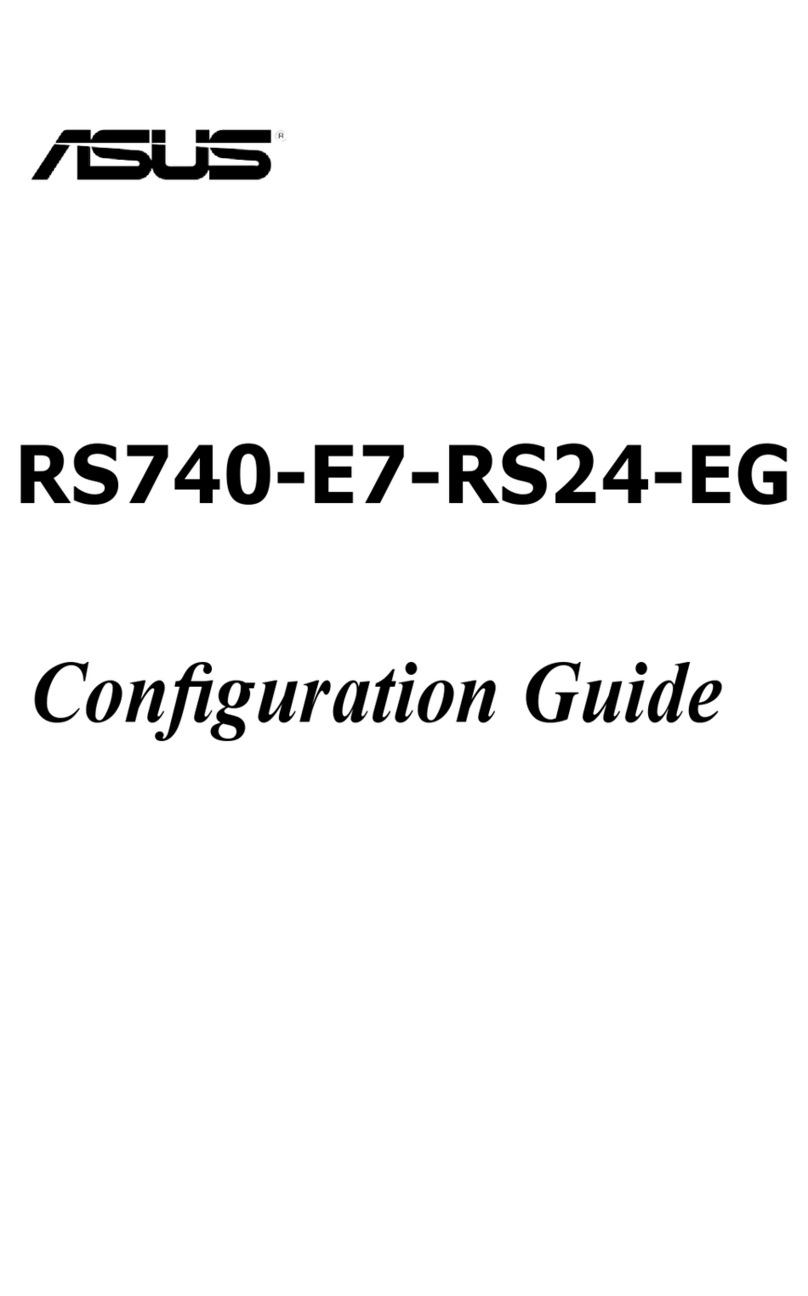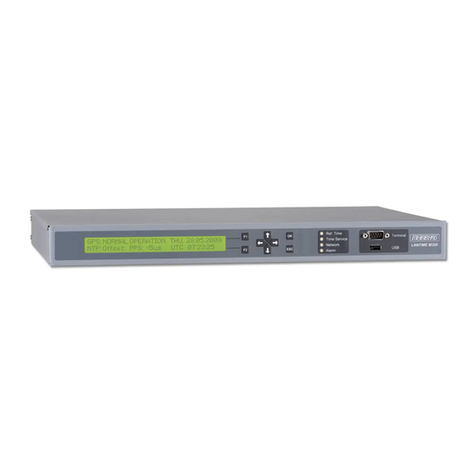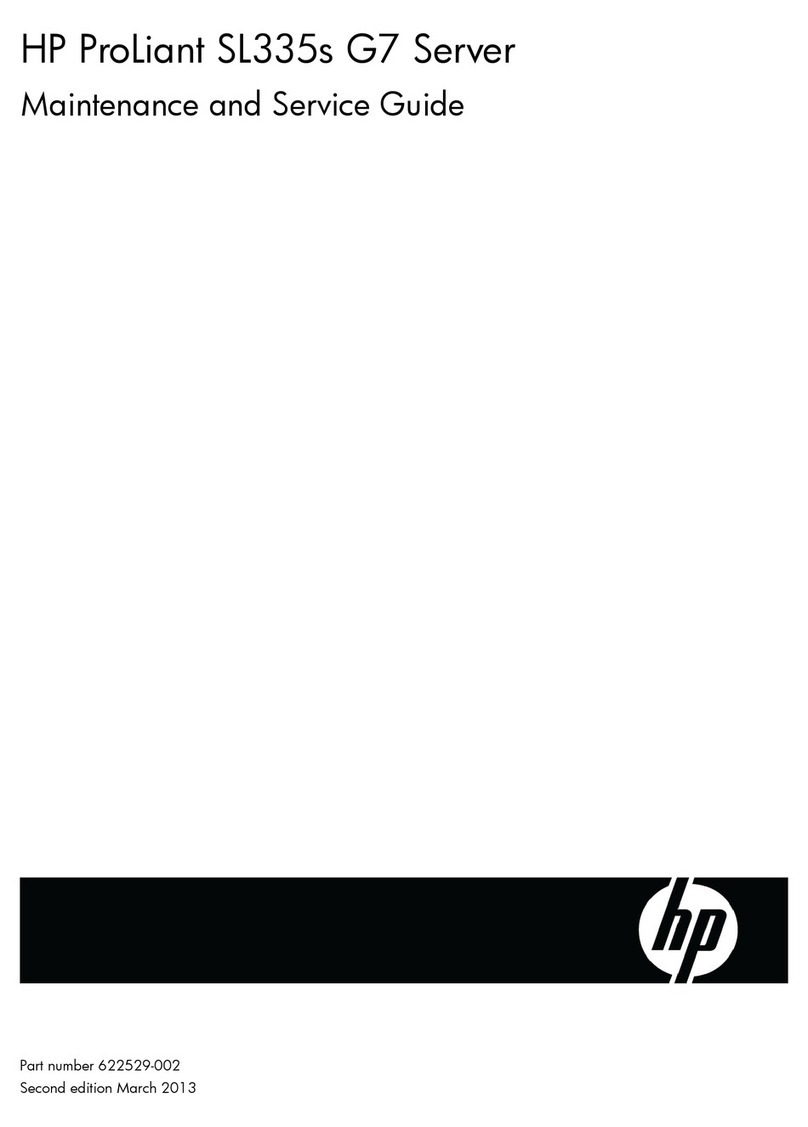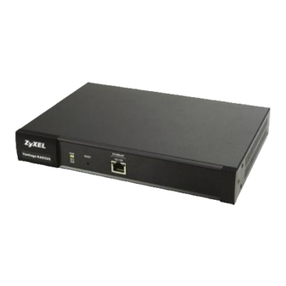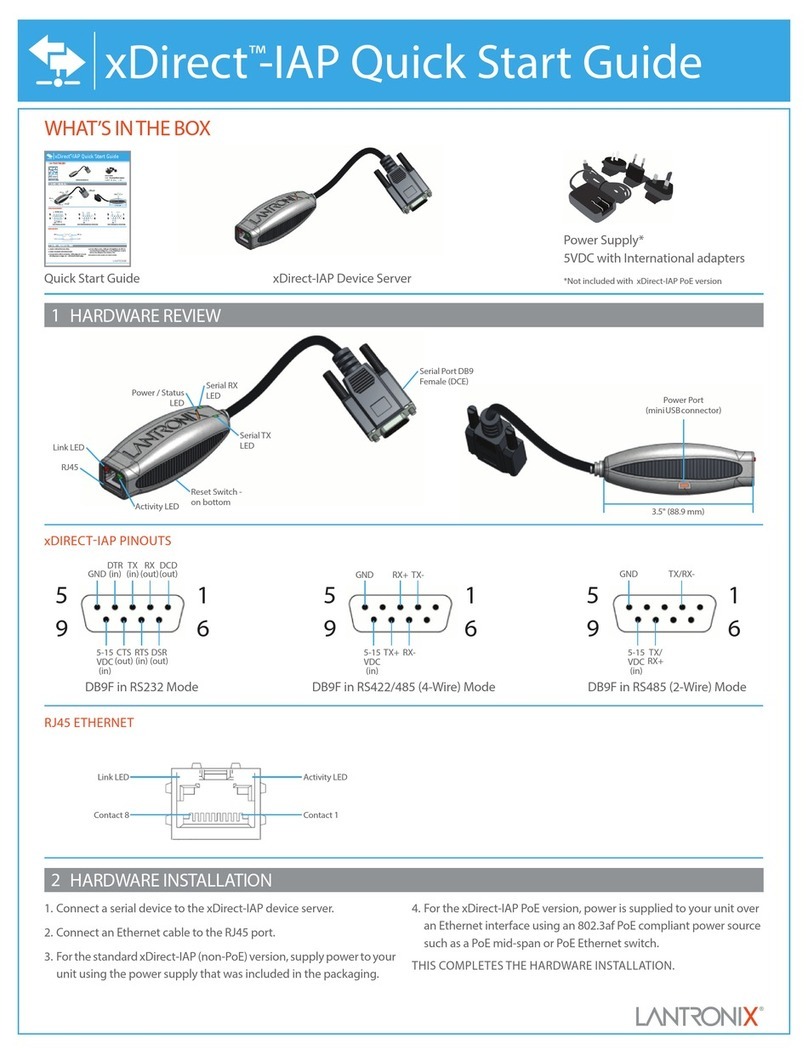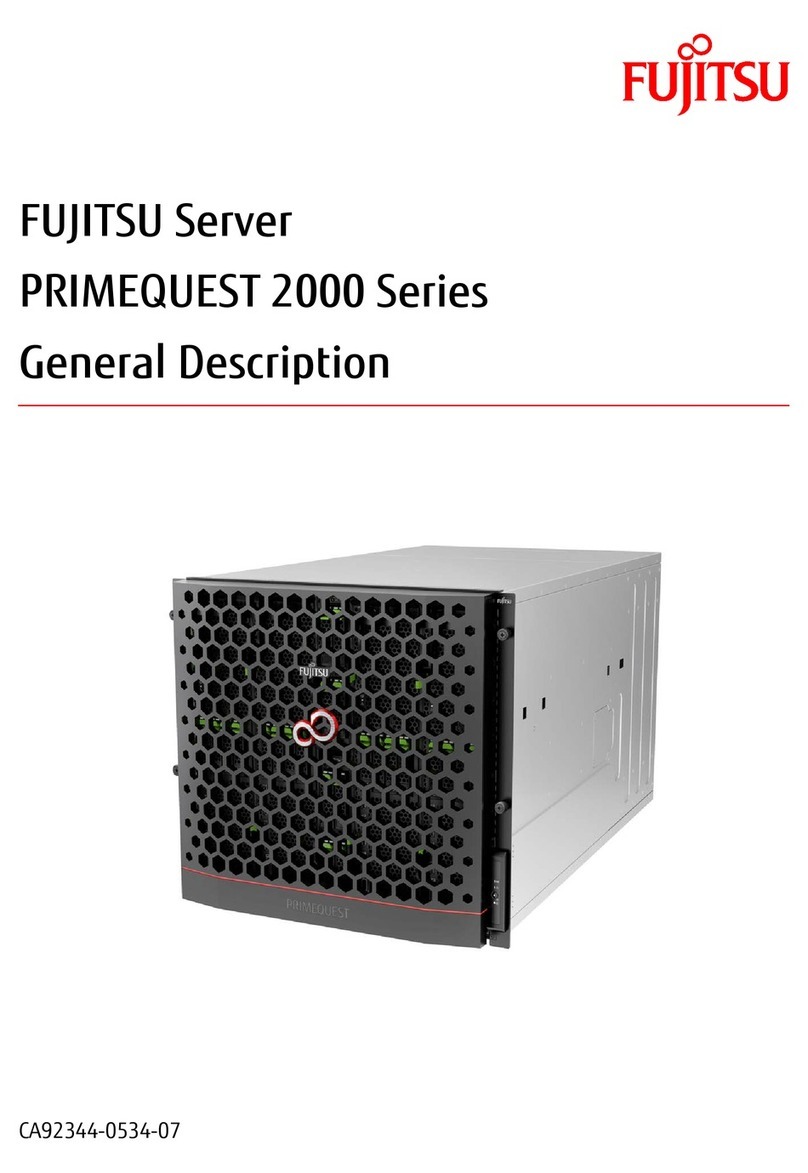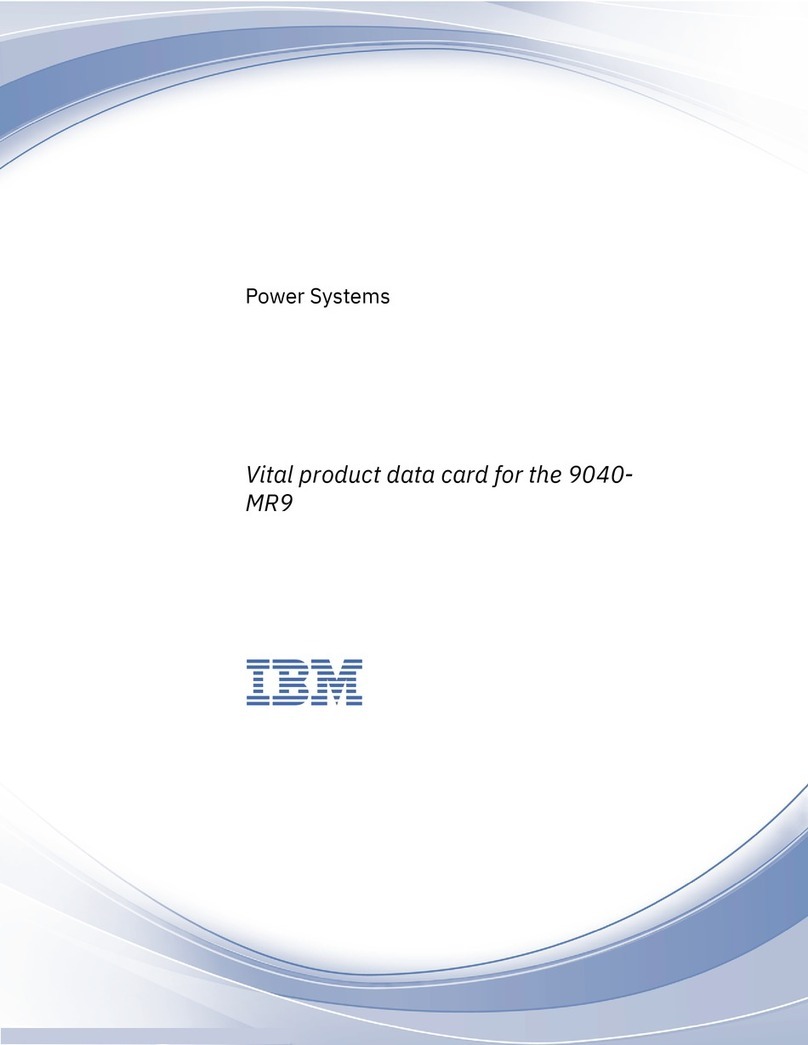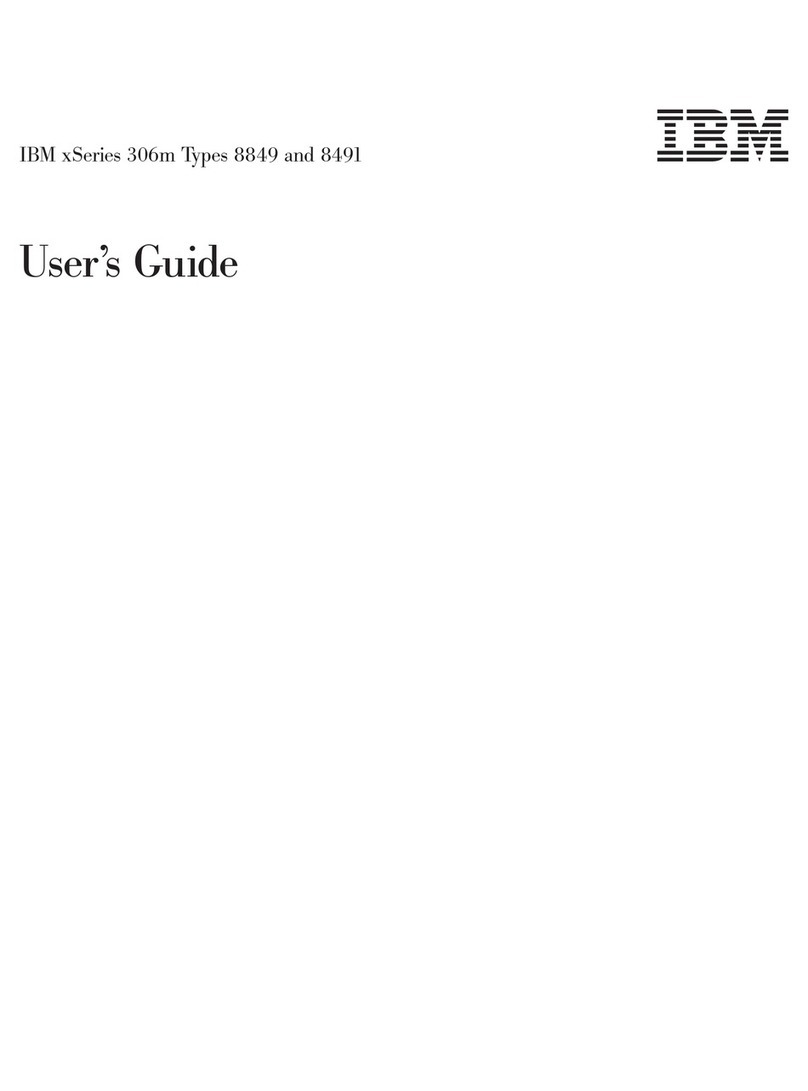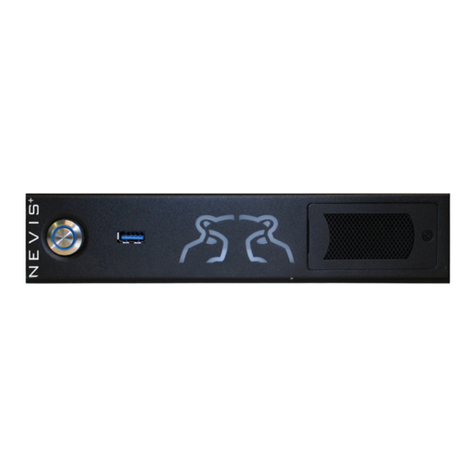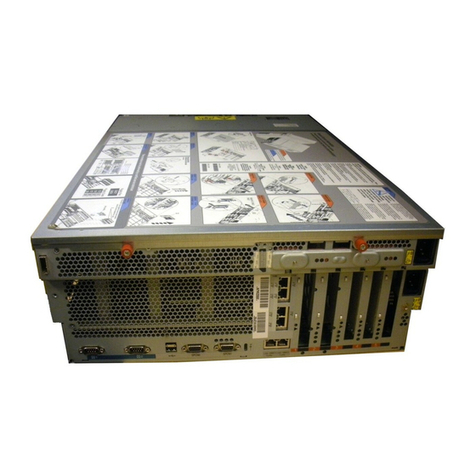
NComputing L-Series User Manual rev.05.07.12
Page 5of 95
NComputing vSpace Server 4 Management Console Guide.......................................................................52
Software Settings (local) .........................................................................................................................53
Sessions................................................................................................................................................... 53
Information & Settings............................................................................................................................55
USB-Device Assignment(s) ...................................................................................................................... 58
Software Settings (LAN) .......................................................................................................................... 60
Hardware Settings (LAN/local)................................................................................................................ 60
NComputing vSpace Server 6 Management Console Guide.......................................................................64
1.1 Installing vSpace................................................................................................................................ 64
1.2 Registering vSpace ............................................................................................................................64
1.3 Connecting Your Devices .................................................................................................................. 64
2.0 NComputing vSpace..............................................................................................................................65
2.1 vSpace Information ........................................................................................................................... 65
2.2 License Information ..........................................................................................................................66
2.3 System Settings - Common ...............................................................................................................67
2.4 System Settings – L-Series/M-series .................................................................................................68
2.5 System Settings – Performance Profiles ........................................................................................... 69
2.6 System Settings – Performance Profiles ADVANCED........................................................................ 70
3.0 Profiles .................................................................................................................................................. 72
5.0 Sessions................................................................................................................................................. 74
5.1 Session Overview ..............................................................................................................................74
5.2 Session Information .......................................................................................................................... 75
5.3 Session Controls................................................................................................................................ 76
6.0 Device Management ............................................................................................................................. 77
6.1 L-series / M-series.............................................................................................................................77
6.2 Device Groups ...................................................................................................................................78
6.3 Information Tab ................................................................................................................................79
6.4 Connections Tab................................................................................................................................80
6.5 Server Groups Tab............................................................................................................................. 81
6.6 Login Tab...........................................................................................................................................82
6.7 Network Tab......................................................................................................................................84
6.8 Password Tab ....................................................................................................................................85
6.9 Update Tab........................................................................................................................................ 86
6.10 Search Settings and Columns..........................................................................................................87
6.11 Configuration Profiles .....................................................................................................................88
6.12 Creating Profiles.............................................................................................................................. 88
6.13 Editing Profiles ................................................................................................................................89
6.14 Applying Profiles .............................................................................................................................90
7.0 Remote vSpace Servers......................................................................................................................... 91
7.1 Enabling Remote Console Support ...................................................................................................91
7.2 Remote Console Features.................................................................................................................92
8.0 Common Tasks......................................................................................................................................93
8.1 Helpdesk Tasks - Remote Viewing and Controlling a Device Session ............................................... 93
8.2 Maintenance Tasks - Performing a Firmware Update on an Active Device ..................................... 94
8.3 Deployment Tasks – Installing and Configuring a new Computer Lab ............................................. 95
